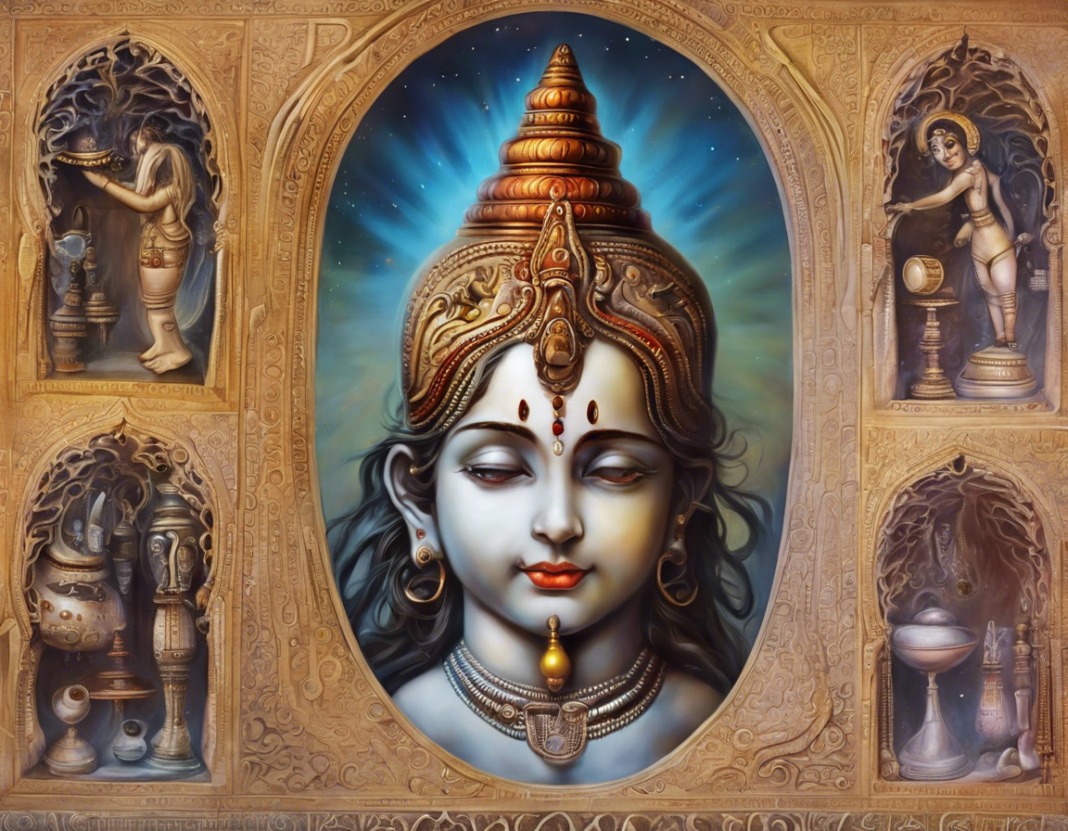The Shivling, also known as the lingam, is a sacred symbol in Hinduism representing Lord Shiva in his formless aspect. While it is often associated with the phallus, it goes beyond that simplistic interpretation. The Shivling is a representation of the cosmic pillar of fire, which is believed to be the source of creation and destruction in the universe. It symbolizes the union of the masculine and feminine energies, the yin and yang, and the procreative power of the universe.
Origins of the Shivling
The worship of the Shivling dates back to ancient times and is rooted in Shaivism, one of the major traditions within Hinduism. According to Hindu mythology, the Shivling represents the infinite nature of Lord Shiva and serves as a focal point for devotion and meditation. It is believed to radiate spiritual energy and blessings to those who worship it with sincerity and reverence.
Symbolism of the Shivling
- Unity: The Shivling symbolizes the oneness of all existence and the underlying unity of creation.
- Power: It represents the cosmic power and creative force of Lord Shiva.
- Renewal: The worship of the Shivling is believed to bring transformation and renewal to the devotee.
- Balance: It signifies the balance between the masculine and feminine energies within oneself.
- Eternity: The Shivling is seen as eternal and indestructible, reflecting the timeless nature of the universe.
Types of Shivlings
There are various types of Shivlings found in Hindu temples and households, each with its own significance:
- Sphatika Shivling: Made of crystal, this Shivling is believed to bring peace and harmony to the worshipper.
- Parthiv Shivling: Made of earth, this Shivling represents the cosmic connection between man and nature.
- Narmadeshwar Shivling: Found in the Narmada River, this Shivling is considered highly auspicious and powerful.
- Banalinga: These are naturally occurring Shivlings found in the river beds, believed to be self-manifested forms of Lord Shiva.
Worship of the Shivling
Devotees of Lord Shiva often perform abhishekam (ceremonial bathing) of the Shivling with offerings such as milk, honey, water, and bilva leaves. The chanting of mantras and bhajans during worship is considered auspicious and helps in connecting with the divine energy of Lord Shiva. The Shivling puja is a deeply sacred practice in Hinduism, symbolizing devotion, surrender, and transformation.
Misconceptions about the Shivling
While some may view the Shivling purely as a phallic symbol, it is essential to understand its deeper spiritual significance. The Shivling is not a representation of mere physicality but rather a symbol of divine power and creation. It transcends gender and sexuality and embodies the universal energy that sustains all life.
Importance of the Shivling in Hinduism
The worship of the Shivling is considered highly auspicious in Hinduism, providing devotees with a spiritual anchor and a connection to the divine. It is believed to bestow blessings, prosperity, and spiritual growth upon the worshipper. The Shivling serves as a reminder of the eternal presence of Lord Shiva and the cyclical nature of existence.
Through the rituals and prayers offered to the Shivling, devotees seek purification, inner strength, and divine grace in their lives. The devotional practice associated with the Shivling helps individuals attain peace and spiritual fulfillment, guiding them on the path of self-realization and enlightenment.
Frequently Asked Questions (FAQs)
- Is the Shivling only associated with Lord Shiva?
-
Yes, the Shivling primarily represents Lord Shiva in Hinduism as the supreme deity of creation and destruction.
-
Can women worship the Shivling?
-
Yes, women can worship the Shivling with the same devotion and reverence as men. There are no gender restrictions in worshiping the divine.
-
What is the significance of offering milk to the Shivling?
-
Offering milk to the Shivling symbolizes purity, nourishment, and sustenance, signifying the devotee’s devotion and surrender to the divine.
-
Is it necessary to have a Shivling at home for daily worship?
-
While having a Shivling at home is beneficial, it is not mandatory for daily worship. One can also worship a symbolic Shivling or a picture of Lord Shiva with equal devotion.
-
What are the main mantras chanted during Shivling puja?
-
The Maha Mrityunjaya Mantra and the Om Namah Shivaya mantra are commonly chanted during Shivling puja to invoke the blessings of Lord Shiva.
-
Can the Shivling be made of any material?
-
Yes, Shivlings can be made of various materials like stone, metal, crystal, or earth, each carrying its own unique energy and significance.
-
What offerings are suitable for worshiping the Shivling?
-
Offerings such as milk, honey, curd, ghee, sandalwood paste, bilva leaves, and flowers are considered auspicious for worshiping the Shivling.
-
How often should one perform abhishekam of the Shivling?
-
Abhishekam can be performed daily, on Mondays (considered auspicious for Lord Shiva), or on special occasions like Maha Shivaratri.
-
Can non-Hindus worship the Shivling?
-
Yes, people of all faiths and backgrounds are welcome to worship and seek blessings from the Shivling, as it represents the universal energy and divine consciousness.
-
What is the spiritual significance of the shape of the Shivling?
- The oval shape of the Shivling represents the cosmic egg or hiranyagarbha, symbolizing the source and sustainer of the universe within its formless and boundless nature.
In conclusion, the Shivling is not just a symbol of masculinity but a sacred representation of the divine power permeating all of creation. Its worship is a profound spiritual practice that helps individuals connect with the transcendental reality and attain spiritual liberation. By understanding the deep symbolism and philosophical essence of the Shivling, one can embark on a journey of self-discovery, inner transformation, and unity with the universal consciousness.

